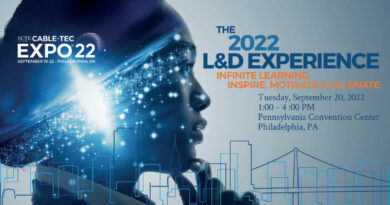Top Things to Consider when Building (or Buying) a Smart Amp
By Mike Whitley
Every product upgrade cycle offers the opportunity to introduce new capabilities and features, with primary objectives often being to reduce operational costs and complexity while improving the overall performance and efficiency of the network. Industry momentum around increasing the monitoring and control intelligence in next-generation HFC amplifiers, those capable of supporting DOCSIS 4.0 specifications, is a textbook example of this form of progressive technology innovation.
A widely accepted definition of a smart amp is still a moving target and not likely to be finalized until 1.8 GHz actives are nearer to commercial availability. Until then, here’s a list of considerations that are essential to the process of working through the many options and trade-offs that are part of the ongoing conversation over HFC amplifier control and monitoring capabilities.
Would Hippocrates approve? Every medical student before becoming a doctor takes a pledge to “do no harm.” Network engineers and solution providers should keep the Hippocratic oath top of mind when mapping out new control and monitoring features for future HFC amplifiers. Some improvements are no brainers, such as the replacement of plug-in pads and equalizers with electronics, which are capable of significantly streamlining installation and other adjustment procedures by enabling technicians to tune an amp using a smartphone or some other connected device.
Other proposed additions, which could significantly increase the cost and power requirements of next-gen HFC amplifiers, deserve closer examination and consideration. While the addition of a transponder, for example, would inarguably yield valuable information and potentially enable some maintenance events to be conducted remotely, the added costs and power consumption, as much as 10 percent in both respects, could outweigh the benefits.
Providing the hooks for an optional transponder for customers requiring a more-robust array of bells and whistles could be an effective way to futureproof next-generation HFC amps without adding unwanted costs and complexity.
Can other sources of intelligence be leveraged? CableLabs’ introduction of the proactive network maintenance (PNM) initiative more than a decade ago essentially converted every cable modem in an HFC network into a troubleshooting device, an invaluable source of extensive network information that fortified network technicians with a treasure trove of network-related diagnostic information.
DOCSIS PNM, embedded into every subscriber’s cable modem, offers the potential to empower technicians to monitor the performance of the plant and identify issues with even more granularity than an amp-located transponder would yield – without the additional power draw or cost. Better leveraging PNM as an alternative to adding additional costs to individual amps is, at the least, worthy of consideration.
How essential are remote capabilities? Dispatching a technician to fix a network issue is the bane of nearly every cable executive’s existence. A proposed antidote to this poison pill, which would presumably reduce the length of customer disruptions, is equipping network equipment with the ability to be controlled from afar, enabling a NOC-located technician to save the day without breaking a sweat or leaving her swivel chair.
But how many truck rolls will be eliminated by endowing amps with the ability to be controlled and adjusted remotely? In almost all cases, amplifiers will require levels to be reset only when something changes in the physical design of the plant, such as the addition of a new subdivision or MDU, impacting the span loss between amplifiers. Such an event would almost always trigger a truck roll, reducing the need for remote control.
Conclusion
The pending introduction of deployment-ready HFC amplifiers that support 1.8 GHz and DOCSIS 4.0 provides a great opportunity for equipment suppliers to pour their latest innovations into actives that will likely be lining outside plants for a decade or more. Under the guidance of the above considerations, the vigilant network equipment supplier will be well-positioned to deliver next-generation HFC amplifiers that are fortified with just the right amount of smarts.
The above is excerpted from a recently published ATX white paper, available at https://atx.com/top-things-to-consider-when-building-a-smart-amp/.

Mike Whitley,
VP of Access Network Products,
ATX Networks
Shutterstock



